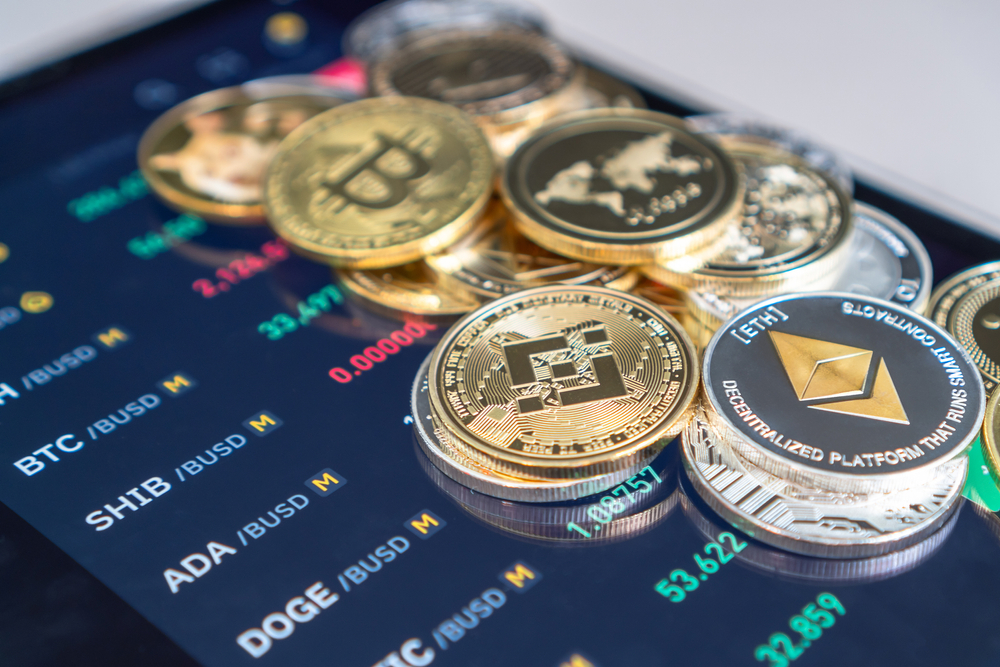The world of cryptocurrencies, led by Bitcoin, has always been a roller-coaster ride, filled with exhilarating highs and challenging lows. Whether you’re an avid crypto enthusiast or a cautious observer, you’ve likely pondered whether the recent downturn is a sign of the end or just a temporary lull. Let’s dive into 15 essential things you need to know to make sense of the current crypto landscape.
1. The Market Is Still Young and Volatile

The cryptocurrency market is still in its infancy, despite Bitcoin being around for over a decade. This youthfulness means that volatility is part of the game, with prices swinging dramatically due to market sentiment, regulatory news, and technological advancements. According to CoinMarketCap, the total market cap of all cryptocurrencies fluctuates significantly, reminding us that this space is far from reaching maturity. Such volatility can be alarming to some investors while providing lucrative opportunities for others who are willing to take the risk.
In a way, the wild price shifts are a testament to the untapped potential and the ongoing evolution of digital currencies. As more institutional players enter the market and blockchain technology continues to develop, this volatility might decrease over time. However, until widespread adoption is achieved, these dramatic ups and downs are here to stay. Embracing this volatility as a feature rather than a flaw can help frame the current market situation more positively.
2. Institutional Interest Is a Double-Edged Sword

Institutional interest in cryptocurrencies has been a hot topic, with major firms and financial institutions exploring digital assets. This interest can bring legitimacy, increased liquidity, and stability to the market, potentially paving the way for broader adoption and acceptance. However, it also introduces new dynamics, such as increased scrutiny and regulatory challenges. According to Reuters, some institutions remain cautious, highlighting the need for clear regulations to protect investors.
While institutional interest can drive substantial inflows of capital, it can also lead to volatility if these large players decide to exit the market en masse. Their involvement can also mean more sophisticated trading strategies, which retail investors might struggle to keep up with. Thus, while their presence is beneficial, it also demands more vigilance and understanding from everyday investors. Balancing these factors can help navigate the crypto market more effectively.
3. Regulation: A Necessary Challenge

Regulation in the cryptocurrency space is a hotly debated topic, with governments trying to balance innovation and investor protection. According to the International Monetary Fund, proper regulation can provide a framework for stability while fostering public trust. Regulation can help eliminate fraudulent activities and create a safer environment for both retail and institutional participants. It is a necessary step for cryptocurrencies to become a mainstream financial product.
Yet, regulation is not without its challenges. Over-regulation can stifle innovation and push crypto activities into jurisdictions with less oversight, complicating global efforts to standardize rules. The key lies in finding a middle ground where regulations protect investors without hampering the creativity and potential of blockchain technology. As the regulatory landscape continues to evolve, staying informed will be crucial for all crypto stakeholders.
4. Bitcoin’s Environmental Impact and the Shift to Green Mining

Bitcoin’s environmental impact has been in the spotlight, casting a shadow on its image as the leading cryptocurrency. The energy-intensive process of mining Bitcoin has raised concerns about its sustainability, prompting debates about the need for greener alternatives. Some companies and countries are responding by transitioning to renewable energy sources for mining operations, which could help mitigate the environmental footprint. This shift is becoming more than just a trend, as it aligns with global goals to reduce carbon emissions.
While Bitcoin itself is often criticized, it’s essential to recognize that not all cryptocurrencies share the same environmental impact. Many newer projects are designed with sustainability in mind from the outset, using less energy-intensive consensus mechanisms like Proof of Stake. These developments highlight the evolving nature of the crypto industry as it adapts to environmental and societal pressures. As the shift towards green mining continues, it may improve Bitcoin’s reputation and long-term sustainability.
5. The Rise of Decentralized Finance (DeFi)

Decentralized Finance, or DeFi, is one of the most exciting innovations to emerge in the crypto space, promising to democratize access to financial services. By eliminating intermediaries like banks, DeFi platforms offer users more direct control over their finances, enabling lending, borrowing, and earning interest on digital assets without traditional financial institutions. This movement has gained significant traction, with billions of dollars locked in DeFi protocols, reflecting a growing trust in decentralized systems.
However, the rapid growth of DeFi also comes with risks, particularly around security. Smart contract vulnerabilities have been exploited in the past, leading to significant losses for some users. While these incidents highlight the need for caution and due diligence, they also drive efforts to improve security and resilience. As DeFi matures, it holds the potential to transform the financial landscape, offering more inclusive and equitable access to financial services around the world.
6. NFTs: A Digital Renaissance or a Passing Fad?

Non-fungible tokens (NFTs) have taken the digital world by storm, revolutionizing how we perceive ownership and value in the digital space. From digital art and music to virtual real estate and collectibles, NFTs have opened new avenues for creators and collectors alike. They allow for unique digital items to be bought, sold, and traded, providing a new way for artists and creators to monetize their work. The NFT boom has sparked debates about the sustainability and value of digital ownership.
Despite the excitement, the NFT market has experienced volatility similar to the broader crypto market, with significant price fluctuations. Critics argue that NFTs are a bubble due to their speculative nature, while supporters believe they represent a fundamental shift in how we interact with digital content. As the market evolves, NFTs are likely to find more practical applications, such as in gaming and virtual worlds, potentially solidifying their place in the digital economy. Whether a renaissance or a fad, NFTs have undeniably left their mark on the digital landscape.
7. The Search for the ‘Next Bitcoin’

With Bitcoin’s monumental rise, investors are constantly on the hunt for the ‘next Bitcoin’—a cryptocurrency that could offer similar returns. This search has led to the emergence of numerous altcoins, each promising to solve Bitcoin’s perceived shortcomings, such as transaction speed, scalability, and environmental impact. While some altcoins stand out for their innovative approaches and potential, others fade away, unable to sustain interest or development.
Venturing into altcoins requires careful research and a clear understanding of their unique value propositions. Many investors have learned the hard way that not all projects have the staying power of Bitcoin or Ethereum. The key is to identify projects with robust use cases, active development teams, and strong community support. As the crypto landscape continues to evolve, staying informed and discerning can help investors navigate the ever-growing list of digital assets.
8. Blockchain Beyond Cryptocurrencies

Blockchain technology, the backbone of cryptocurrencies, extends far beyond digital currencies, offering transformative potential across various industries. From supply chain management and healthcare to finance and voting systems, blockchain promises increased transparency, security, and efficiency. This technology enables decentralized and tamper-proof records, reducing the need for intermediaries and enhancing trust in systems.
As more industries explore blockchain’s potential, the technology is gradually moving from experimental to mainstream applications. However, widespread adoption faces challenges, such as scalability and interoperability issues, which developers continue to address. By overcoming these hurdles, blockchain could revolutionize traditional industries, offering new business models and enhancing current systems. The journey of blockchain is just beginning, with a future that holds vast possibilities beyond cryptocurrencies.
9. The Role of Stablecoins in the Crypto Ecosystem

Stablecoins have emerged as a vital component of the crypto ecosystem, providing a bridge between traditional finance and digital assets. Pegged to stable assets like fiat currencies, stablecoins offer a way to mitigate the volatility often associated with cryptocurrencies. They enable seamless transactions, remittances, and access to DeFi platforms without exposure to the dramatic price swings of other crypto assets.
However, stablecoins are not without challenges, particularly around regulation and transparency. Concerns about the reserves backing these digital tokens and the potential for misuse have led to increased scrutiny from regulators. As the demand for stablecoins continues to grow, ensuring their stability and regulatory compliance is crucial for maintaining trust. With their ability to offer stability and versatility, stablecoins are poised to play an increasingly significant role in the digital economy.
10. Security Concerns and the Importance of Education

Security remains a paramount concern in the crypto space, with hacks and scams posing significant risks to users and investors. The decentralized nature of cryptocurrencies means that users bear full responsibility for their assets, highlighting the importance of understanding how to secure them. This encompasses using hardware wallets, enabling two-factor authentication, and remaining vigilant against phishing attacks.
Education is crucial in empowering users to navigate the complex crypto landscape safely and effectively. As the industry evolves, new security threats emerge, requiring continuous learning and adaptation. By fostering a culture of education and awareness, the crypto community can build a more secure and resilient ecosystem. Ensuring that users are equipped with the knowledge to protect themselves is key to the long-term growth and trust in the crypto market.
11. The Impact of Social Media and Influencers

Social media and influencers play a significant role in shaping the crypto narrative, with platforms like Twitter, Reddit, and YouTube serving as key information hubs. Influencers and thought leaders can sway public opinion, drive awareness, and contribute to the volatility of crypto prices. While social media can democratize information and offer valuable insights, it also poses risks of misinformation and hype-driven decision-making.
Navigating the influence of social media requires discernment and critical thinking to separate valuable insights from noise. Users should cross-reference information and rely on reputable sources before making investment decisions. While influencers can provide useful perspectives, it’s essential to conduct independent research and not rely solely on their opinions. As the crypto community continues to grow, responsible use of social media will be crucial in shaping an informed and balanced market.
12. The Role of Central Bank Digital Currencies (CBDCs)

Central Bank Digital Currencies (CBDCs) represent a growing interest from governments to leverage digital currency technology in the traditional financial system. CBDCs aim to provide the benefits of digital currencies while maintaining sovereign control and stability. Countries like China and Sweden have already made significant strides in developing their own digital currencies, while others are in exploratory or pilot stages.
The introduction of CBDCs could have profound implications for the crypto space, potentially affecting the demand for certain cryptocurrencies. They could drive greater acceptance and familiarity with digital currencies among the general public, while also prompting regulatory responses to address privacy and cross-border transactions. As central banks explore this avenue, the interaction between CBDCs and cryptocurrencies will be an important dynamic to watch, influencing the future of digital finance.
13. The Influence of Geopolitics

Geopolitical events and policies can significantly impact the crypto market, influencing investor sentiment and regulatory approaches. Countries with restrictive stances toward cryptocurrencies can create challenges for adoption and innovation, while supportive policies can foster growth. Trade tensions, economic sanctions, and global political shifts can also affect the stability and accessibility of digital assets.
Crypto’s decentralized nature allows it to transcend geopolitical boundaries, offering a potential safe haven during uncertain times. However, navigating these geopolitical complexities requires awareness of international developments and regulatory landscapes. By understanding the geopolitical context, investors can better anticipate potential risks and opportunities in the evolving crypto market. Geopolitics will continue to play a crucial role in shaping the future of cryptocurrencies and global financial systems.
14. The Need for Innovation and Adaptation

The crypto industry thrives on innovation, constantly pushing the boundaries of technology and finance. To remain relevant and competitive, projects must adapt to changing market conditions, regulatory environments, and user needs. This innovation is evident in the rapid evolution of blockchain technology, the emergence of new consensus mechanisms, and the development of scalable and secure solutions.
As the industry matures, collaboration and interoperability between projects become increasingly important, enabling the growth of a cohesive and robust ecosystem. By fostering innovation and embracing change, the crypto space can continue to evolve and offer new possibilities for the future of finance. The ability to adapt and innovate will be key to the long-term success and sustainability of the crypto industry.
15. The Long-Term Vision for Crypto and Blockchain

The long-term vision for crypto and blockchain extends beyond financial speculation, aiming to create a more inclusive and equitable global financial system. By empowering individuals with greater control over their assets and reducing reliance on traditional intermediaries, cryptocurrencies and blockchain technology have the potential to transform the way we interact with money and information. This vision includes increasing financial inclusion, enhancing transparency, and fostering innovation across various sectors.
Achieving this vision requires collaboration between stakeholders, including developers, regulators, and users, to address the challenges and unlock blockchain’s full potential. While there are hurdles to overcome, the progress made so far is a testament to the resilience and creativity of the crypto community. As we look to the future, the potential of crypto and blockchain to drive positive change and create a more connected world is both exciting and inspiring.
This article is for informational purposes only and should not be construed as financial advice. Consult a financial professional before making investment or other financial decisions. The author and publisher make no warranties of any kind.








